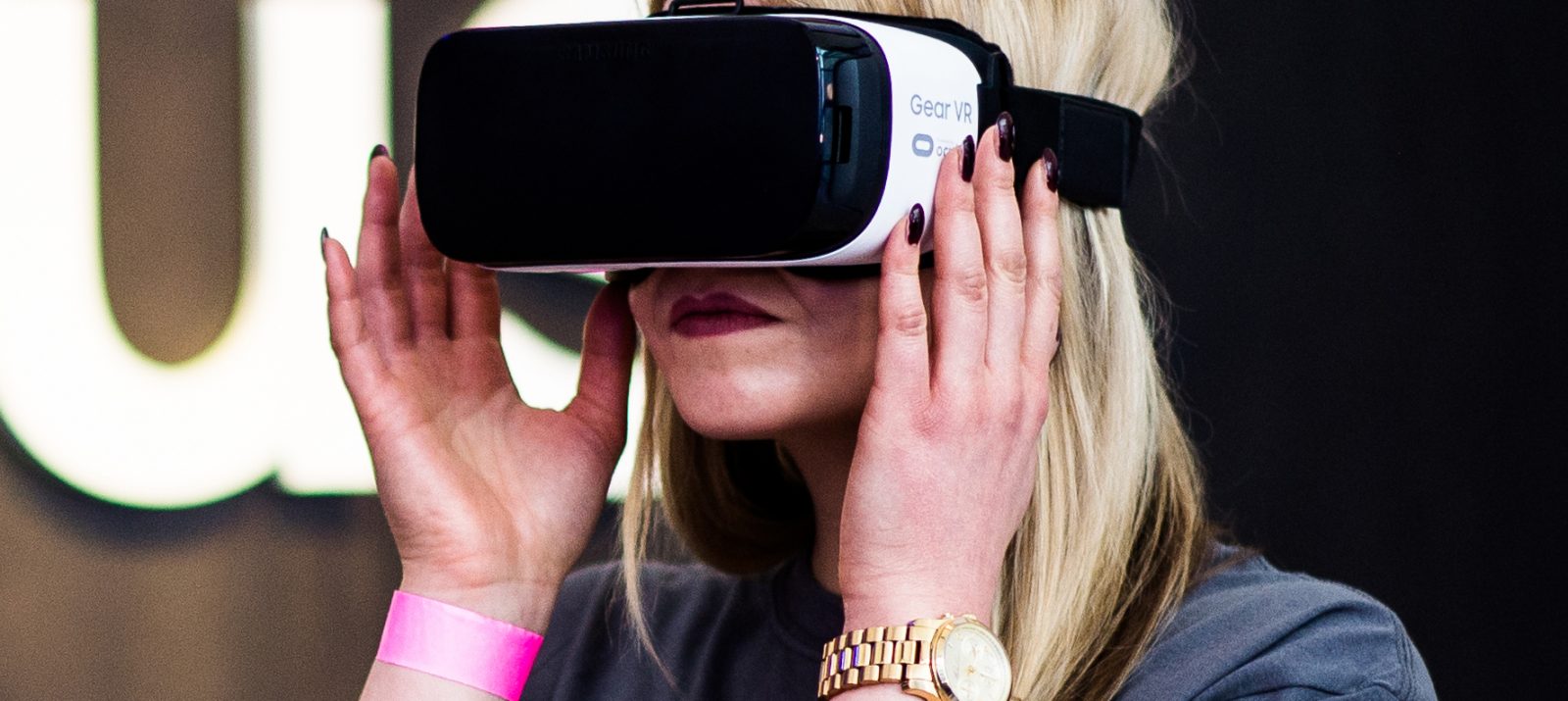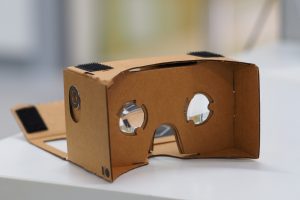
If you think 360° photography or virtual reality (VR) is only for people with a lot of money and the necessary technology, you’re wrong. Take some cardboard and glue, your own smartphone and you can dive into distant worlds and virtual realities. We explain how you can experiment with VR & Co. together with your children at low cost.
It doesn’t have to be expensive VR glasses. For many purposes, a smartphone or tablet is already sufficient. You can use it to view 360° photos by swiping your finger to the right or left over the image.
To really dive into virtual worlds, however, VR glasses would be great! It’s very easy and cheap to make, for example, from a pizza box. Glasses like these are called Cardboard. And crafting and painting such your very own VR glasses is fun too! How exactly this works is described in this manual. On this page, you can also order the optical lenses needed for the VR glasses for a few euros. The smartphone is then placed in the glasses and off you go on a voyage of discovery!

Assembled Google Cardboard VR mount, CC by 2.0; Author: othree (https://www.flickr.com/people/12452841@N00)
Especially for the first try out, Google ‘s applications are a great thing! Is there a place your child has always wanted to travel to? Search for it together on Google Maps, such as Niagara Falls. Go to “Photos”. Among them there are also photos in a 360° view, so you can see the place from all sides. If you have Google Street View installed, such images can also be viewed in VR view with cardboard VR glasses. To do this, click on the icon in the upper right corner of the photo, which shows a small pair of VR glasses. Now the image splits and the smartphone can be inserted into the VR goggles. Let’s go to Niagara Falls!
With Google Expeditions you can go on exciting expeditions, for example to the dinosaurs or to a space station in outer space. There are also exploration tours, where the virtual environment has been enhanced with text panels and images, so that you can get information by clicking on an icon. You can even bring the dinosaurs into your own children’s room with the AR mode. AR means augmented reality. You don’t need VR goggles for this, just your smartphone with a built-in camera that films the surroundings. Dinosaurs will then appear on the display in your own child’s room!
On YouTube there is a large number of 360° videos. If you have the YouTube app installed on your smartphone, you can travel with your child into space or dive with sharks in the Caribbean Ocean with just a few clicks. Search for 360-degree videos and activate VR mode via the glasses icon.
With the Street View app, you can also take your own 360° photos, view them and share them with others, for example to show dad how nice it is with grandma at the zoo. To do this, tap the icon with the photo camera in the bottom right corner of the app. Then tap the icon again and the camera opens. Now follow the orange dot and take as many photos on the right, left, top and bottom until there is no more gray area on the display. The app helps with this. Once you have ticked the checkbox, the 360° photo is completed and it can be viewed with or without VR glasses. The photo does not have to be published, but can also be shared privately.
Maybe you’ll manage to trick reality and capture a person several times in one 360° photo!?
It takes a moment to get used to looking through the VR glasses because the brain first has to superimpose the two images that a smartphone displays in VR mode. Sometimes it helps to slide the smartphone slightly to the left or right to make it fit.
Some people also get “seasick” when they put on VR goggles. This is what you should look for in your child. For starters, it is best to choose such content that does not contain movements and fluctuations. For other content, it can help to move along with the image or video.
Precisely because the virtual environment feels so real with VR goggles, the addictive potential for children is greater than for adults. In general, immersion in virtual worlds with VR goggles is only recommended from around 13 years of age. You should always accompany and time your child’s VR experiences. Approach the technology slowly with your child. Look at photos first before playing videos.
There is a lot of content and games for VR goggles that are not for every age suitable. For example, first-person shooter games can also be found in the app stores. Weigh which apps and games are beneficial, but which may scare your child.